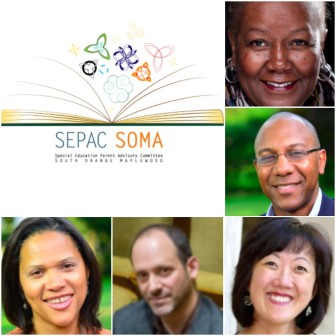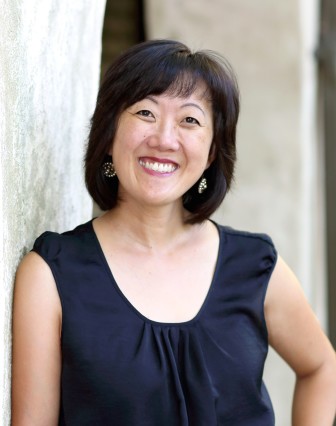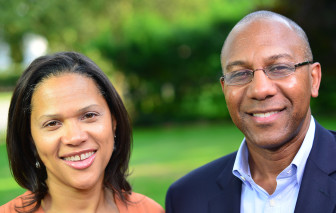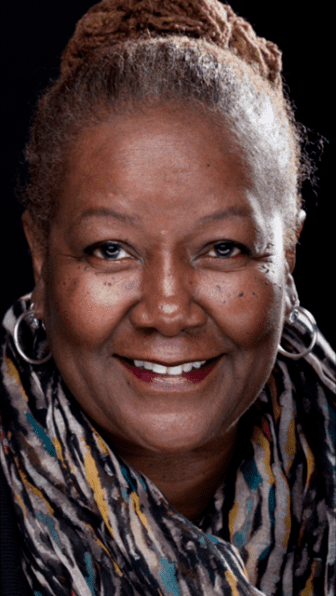
From the Special Education Parent Advisory Committee (SEPAC):
To the South Orange-Maplewood Community,
We are pleased to share with you these 2016 Board of Education candidate statements on special education. We thank all the candidates for taking the time to share their perspectives.
The Special Education Parent Advisory Committee (SEPAC) is not a political organization, and it does not endorse candidates in any election. This presentation is intended solely to assist voters by presenting candidate views on issues related to special education. The views expressed herein are the candidates’ own.
The candidates were invited to provide statements in the form of responses to three questions. The attached responses are presented in alphabetical order by candidate name.
- What would you like SEPAC members to know about your experience and priorities regarding special education?
- What guidance would you give the Board and Administration as it implements the Access & Equity Policy with respect to special education students, students with 504 plans and students with other challenges?
- According to 2015 PARCC results reported to the Board, the largest achievement gaps in grades 3-8, in both math and English language arts, were between top performers and students with disabilities. What do you feel can be done to close these gaps?
We encourage you to reach out to individual candidates with any questions regarding their responses, and we encourage you to share this presentation with community members who might have an interest in special education. An electronic copy will be available on SEPAC’s website at https://sepacsoma.org/ .
Please visit the website to learn more about special education in SOMA and to sign up to receive regular notices of SEPAC meetings and activities.
But most importantly, we encourage all eligible voters to get out and vote on Tuesday, November 8th.
Sincerely,
The SEPAC Executive Board

Susie Adamson
Susie Adamson
What would you like SEPAC members to know about your experience and priorities regarding special education?
I have been active in serving the children and families of South Orange and Maplewood for almost a decade – as Seth Boyden PTA President and Board Member and as Co-President and Board member of Presidents’ Council. In that experience, I have worked alongside of Special Ed PTO and SEPAC leadership and have listened carefully to the issues that they represent and champion. I am a strong proponent of making sure that our PTAs and HSAs represent ALL the students in our schools and the importance of raising the awareness that students who receive services are in ALL of our schools, as well as out of district schools.
My priorities regarding special education, based on conversations with parents and teachers, would be:
- Improve home/school partnership – provide clearer, regular pro-active communications – from Special Ed Administration and case managers
- Better train and equip teachers on the referral and intervention process and establish building and department accountability to make sure the process is being carried out in a timely and effective manner
- Establish system for regular assessments of how well the district (school, teacher) is complying with the requirements of IEPs and 504s – are we meeting legal requirements and meeting the needs of each child?
What guidance would you give the Board and Administration as it implements the Access & Equity Policy with respect to special education students, students with 504 plans and students with other challenges?
Members of SEPAC and the Special Ed PTO should be invited to actively participate in the development and rollout of the implementation plan. Our administration is pulled in so many different directions and often forced to deal with the urgent over the important. We have the resources of an involved and invaluable community of parents who can provide expertise and context, representing the vastly diverse array of special education needs – let’s tap into this! We need to make participation easier, more accessible to more families, and really listen to the input given. The Access & Equity Policy is too important to implement in a way that does not represent one of the groups for which access and equity have been challenging, in a way that is substantive and sustainable.
One of the biggest challenges will be the budget/staffing/schedule trifecta – to accommodate a special needs student in a particular class, supports (e.g., staff member) would be needed. If just one student with special needs would be in the previously “inaccessible” class – how is this viable from a budget/staffing/schedule standpoint? We need to work out these scenarios and possibilities and identify creative solutions for when the budget/staffing/schedule wall is hit so that all students can truly have access.
According to 2015 PARCC results reported to the Board, the largest achievement gaps in grades 3-8, in both math and English language arts, were between top performers and students with disabilities. What do you feel can be done to close these gaps?
The disparity in achievement is not surprising to me given the single dimension of any standardized test and should lead us to ask questions beyond how we can close the gap in performance between top performers and students with disabilities.
- Does it make sense to use standardized testing to measure achievement for the special education population? It seems logical that the measurement of the progress of children who struggle with a wide range of learning disabilities would not be easy to do in a standardized way.
- Does it make sense to lump all special education students into one subcategory? It should go without saying that children classified as special education are a diverse lot so deeper, more nuanced analysis of their progress seems warranted. Additionally, our current assessments and trajectories are fairly one-dimensional – college prep. What about our students – special education and general – for whom college is not the goal? In a community that values diversity, we should also be embracing diverse pathways of achievement.
- Does it make sense to test students based on their age, not their placement? Currently, students take the test of their age peers, not their placement – e.g., a junior in high school takes the test that all juniors in high school take for math even if the student is in replacement curriculum. We should be challenging this practice.
So, my priority with regard to this area of concern would be to determine a better way to assess the learning of special education students based on their level of functional performance, with the intent to ensure student growth, as well as measure the success of interventions. We may not be able to compare data in an apples to apples way with general education students, but we should focus on assessments and benchmarks in order to determine whether or not students are progressing as they should from year to year.

Stephanie Lawson-Muhammad and James Davis
James Davis
What would you like SEPAC members to know about your experience and priorities regarding special education?
I have several family members with physical disabilities and I have seen how the laws and policies can be effectively or ineffectively implemented to accommodate physical challenges in the workplace. However, I want to be careful to avoid the assumption that all of that translates directly into an understanding of schools in general or our district in particular. The business of a school district is children, not adults, and that makes it infinitely more complicated.
Because I have been involved on a personal basis with advocacy work in our schools on behalf of my own children and other children, I have encountered the work of our special services department. The district’s approach to dealing with the parents of students with special needs requires significant enhancements.
Being an attorney by trade, I have made it a point to read a good deal of the law in this area, but I am still learning. A few observations are in order:
- Special services is a separate department, a separate program of service delivery and thus a separate chain of command. That does not work. For children who are mainstreamed for a few subjects out of self-contained classrooms, or children whose placement finds them in the least restrictive environment of regular classrooms for most of the day, the main adult they deal with is a regular classroom teacher. There is no effective system in place to ensure that the teacher is initially briefed on the student’s IEP, let alone apprised of the student’s progress or emergent issues day by day or week by week. The Response to Intervention committees in our schools seem more focused on discussing the issues of students who are not classified, and whether those issues represent the manifestation of a disability warranting evaluation and classification. The Child Study Teams do not have any reporting responsibility to the building principal and thus operate independently of the principal’s approach to guiding and mentoring the teaching staff. The reporting and communications lines should be more formalized and cohesive.
- The process of evaluation and classification is broken and only functions the way it should in particular cases. There are timelines and deadlines in the law for the evaluation process that our district regularly misses. This prolongs the period of time when vulnerable students and their anxious parents are becoming aware of what may be an emergent disability. In many cases, parents are forced to seek outside, costly expert opinions to force the district’s hand. Even then, the process is way too messy. The children are the ones who suffer. Managing costs appears to be a central focus of some district personnel. Ironically, the district’s callous approach probably leads to substantial increased costs: parents who seek outside services and pay out of pocket often times sue to recover those costs after the fact. And parents whose trust in the district is severely damaged are much more likely to demand an eventual out-of-district placement for their children when in some cases the district could effectively meet their needs in-house.
- With respect to children placed out-of-district, I am concerned that some people in the district regularly advocate “bringing them all back” and saving all of that expensive tuition money. I believe that this type of approach is misguided. There are certainly some classified out-of-district students, for whom the district has effective programming, who could be spared what is in some cases a long daily bus ride. But the in-district programming would in many cases cost as much per student as the out-of-district tuition. We should try to bring them back NOT primarily for cost reasons, but because it would serve them better to attend school in-district. Of the 160-180 students placed out of district, many have disabilities so severe or so unique that the district could not and likely could never, serve them well. And in the marginal cases where the district might be able to serve them, the cost would be as high as or higher than the out-of-district tuition. I think that talking about bringing all of our out-of-district kids back and saving all that money is callous and deeply frightening to parents who are many times struggling to cope with the special needs of their children. If elected, I will not be silent in the face of the demand to “bring them all back.”
What guidance would you give the Board and Administration as it implements the Access & Equity Policy with respect to special education students, students with 504 plans and students with other challenges?
Students with disabilities are in many cases fully capable students in academics and may need only a few allowances to demonstrate their proficiency on standardized tests or other cognitive abilities. It is troubling to me that the accommodations granted for extra time in many IEPs are not consistently fulfilled, and seem to be the responsibility of individual staff members to figure out rather than the responsibility of the people who build the schedules. There are many claims that the new schedule configurations in our middle and high schools prevent students from getting the extra time specified in their IEPs or 504 plans. There is no new policy needed here, but Board oversight is lacking if such a violation of the law is occurring.
Beyond this specific issue, however, is the question of providing appropriate supports and encouragement. Sometimes, in an attempt to be helpful to students with disabilities, we lower our expectations. It is understandable that teachers and even parents do this, but district must do its best to ensure that ALL children receive a thorough and efficient education. Many classified students are capable of advanced, challenging work and we must ensure that our system is geared to consistently encourage that, and that necessary academic supports are in place to maximize a student’s chances of success when they opt up to more challenging courses.
According to 2015 PARCC results reported to the Board, the largest achievement gaps in grades 3-8, in both math and English language arts, were between top performers and students with disabilities. What do you feel can be done to close these gaps?
We must understand that the PARCC, like most standardized tests, is at best a crude measure of what students know and are able to do. And the PARCC is probably worst than most, since it is not calibrated to grade level content and reportedly suffers from erratic scoring on those portions that go beyond multiple choice questions.
However, I don’t think there is a simple answer to this question. Anyone who would propose some blanket approach to collectively raise the scores of students with disabilities misunderstands way too much for me to clarify it here. The general answer to this question is that we must improve delivery of special services and integrate/coordinate that service delivery with the work of all classroom teachers.
As many of you know, I am running for a first term on the Board with Stephanie Lawson-Muhammad who is running for re-election to continue the work of making ours a better district for all children that she undertook by running in 2013. One of the topics on which we are in rock solid agreement is the question of how the Board and the district look at educational outcomes. The use of test scores as the primary measure of student proficiency is appalling. Some people want to do away with standardized testing altogether. We are not in that camp. In some cases, high performance on standardized tests lets students defy the low expectations that too many adults have of them – whether they be students with disabilities or students of color. The State of New Jersey needs at minimum to replace the PARCC with a better test or require enhancements to make the PARCC test more effective as an evaluation tool for determining, for example, a child’s academic capabilities.
More importantly, our district needs to put the tests in perspective as only a crude measure of student achievement. We need to stop looking at averages of subgroups as point-in-time snapshots and start looking at scores of only one of multiple measures that depict the progress of individual students over time. Not the progress of the average of sub-groups as the No Child Left Behind Act specified, but the progress of each and every individual student. That would give us a system where educators could more effectively ask whether the set of interventions provided to a given child are enabling progress for that child. We need to make sure we don’t obscure how we look at each child when we look at outcome data for the district as a whole.
Stephanie Lawson-Muhammad
What would you like SEPAC members to know about your experience and priorities regarding special education?
In my first year on the Board in 2014, I served as Board liaison to SEPAC and Special Education PTO. I was new to this arena and had lots to learn about the laws and how the SOMSD delivered to this community within our community. I view the work SEPAC does as an advocate for children with disabilities as critical to ensuring we meet our obligations with quality outputs.
What I’ve learned in the last three years is that low expectations are in some ways the central issue facing all of us as we seek to ensure that our children are well-served. We want them to be engaged, excited learners, challenged, supported and valued for what they bring to the classroom. As the mother of three children of color, I have experienced first-hand that is not always the case. As SEPAC liaison, I learned that my anxieties are similar to those of parents of children with disabilities, wanting to make sure that teachers get to know our children as individuals and realize their potential.
Making our district into a fully welcoming and supportive place requires more than relying on the goodwill and heroic efforts of individual teachers. It means creating a system where that approach is the norm and where administrative support systems make it possible for teachers to work as part of a team that provides consistent encouragement and high expectations (not to mention the services precisely specified in the IEP).
We have a long way to go. Recent departures and the announcement of a retirement provide the opportunity to bring in new talent to address our needs and begin the transformation that is required to ensure we are meeting the needs of our special education community. I fully support Dr. Ramos’ efforts to bring in a recruiting firm to ensure that we conduct a National search to recruit and hire someone who can take our special services department to the next level.
What guidance would you give the Board and Administration as it implements the Access & Equity Policy with respect to special education students, students with 504 plans and students with other challenges?
There is no reason why most students with disabilities shouldn’t be able to take advantage of everything our schools have to offer. The Board must look for more than positive sentiments in the implementation plans to be presented by Administration. We must see what concrete supports will be put in place to allow students to opt up to more challenging work. We must see that the resourcing, coordination and scheduling of those supports can actually provide students with what they need. We must see that the outreach and encouragement by staff and administration for students to opt up is systematic and effective. We must see that all teachers of higher level and AP courses are welcoming and supportive to students who have done so.
But this policy goes beyond just higher level and AP courses. It must ensure that every student in every classroom is afforded an environment that is focused on teaching and learning to ensure we are setting all students up for successful outcomes once they graduate and enter college or the workforce.
According to 2015 PARCC results reported to the Board, the largest achievement gaps in grades 3-8, in both math and English language arts, were between top performers and students with disabilities. What do you feel can be done to close these gaps?
We must ensure that all services specified in IEPs and all accommodations specified in 504 plans are delivered as intended, regularly evaluated for effectiveness and adjusted as needed. We must ensure that our regular classroom teachers know how to teach effectively with several different strategies, to ensure they are reaching students across the various modalities they require to yield successful outcomes.
We must take a hard look at how the elementary inclusion model has evolved and make adjustments to ensure that we are not under-resourced. This needs to be done on a case-by-case basis. But the fact that so many students with disabilities are underperforming is an indication that we don’t have it right. We know from other districts that it is possible to close these gaps. We must not allow their disabilities to define them, whether in their own mind or in the mind of their teachers.

Anthony Mazzocchi, former Director of Fine and Performing Arts for SOMSD, is running for Board of Education.
Anthony Mazzocchi
What would you like SEPAC members to know about your experience and priorities regarding special education?
I have been a teacher and an educational leader in a public system for almost 20 years. I have taught music in the heart of Brooklyn, written curriculum for the NYCDOE, served as Director of Fine and Performing Arts right here in SOMSD, and I now run a School of Music at Montclair State University that trains teachers, as well as a summer school in Vermont that accommodates students from all walks of life. In all my work, I have been a champion of full and intentional inclusion of students with disabilities in arts education programs.
It is my core belief that rich arts experiences in pre-K through 12th grade for all students, whether integrated in the core curriculum or taught as separate subject areas, lead to increased academic, social and functional skill development and knowledge. For students with disabilities, knowledge and skill development gained through the arts can play a crucial role in their overall success in life beyond school walls. My actions as a supervisor in SOMSD reflected my beliefs: I made sure that every student in our district had the opportunity to explore and experience the transformative power of the arts through the most creative scheduling possible in each school.
Through collaboration with special educators in district, all of our staff hold a unique perspective in regard to defining student success in broader terms than academic achievement. During my time in district, we identified hidden talents, passions, and potential in students with disabilities that never would have been realized in our ever-narrowed curriculum otherwise. Over time and with consistent effort, these discoveries often lead to desirable life outcomes in areas of post-secondary education, employment and success in life.
What guidance would you give the Board and Administration as it implements the Access & Equity Policy with respect to special education students, students with 504 plans and students with other challenges?
As a member of the SOMSD Board of Education, I will draw upon my career in education to lend a voice to a few issues I believe are crucial to our special needs community moving forward:
- The considerable attention being given to measures of student academic performance within state accountability systems makes it crystal clear that we are adopting a narrow and restricted definition of our expectations for public education – and therefore our children. Expectations of our schools should include outcomes in many areas of life, including physical health, social and emotional well-being, creative/artistic endeavors and citizenship.
- I believe special education has reached a tipping point. Teachers and supervisors from all disciplines in our district have worked to carry out policies and procedures to promote meaningful life outcomes for students with disabilities, yet now we find that path intersecting with the rapid expansion of misguided statewide accountability systems constructed from standards, assessments, and significant consequences for students and schools. As a Board of Ed member, I will bring this perspective to the discussion table – this must consistently be addressed.
According to 2015 PARCC results reported to the Board, the largest achievement gaps in grades 3-8, in both math and English language arts, were between top performers and students with disabilities. What do you feel can be done to close these gaps?
The PARCC exam is diagnostically and instructionally useless, therefore we are judging this “gap” on a flawed metric. If you believe the PARCC exam, in the big scheme of things, is the ultimate measure of student achievement, then I am not your candidate.
Of course we want to hold all our students to high standards, but it will take far more than PARCC – which isn’t good for any students –to accomplish this. The test in itself is not fairly implemented – there is little accommodation for students; the test is extremely difficult as far as fine motor skills are concerned under the best of circumstances — let alone for a student with a 504 plan. The number of issues concerning PARCC as it pertains to its effectiveness is far too long to list here.
Ultimately, students are not numbers; our system is continuing to contort itself to meet a false set of measures. PARCC is no less than accountability run amok, and it is a clear disservice to students with special needs. Our district must instead focus on multiple ways of defining what “success” in school means, especially for students with special needs, and commit to optimizing teaching for all of our students based on scientific insights of how individuals learn differently.

Johanna Wright
Johanna Wright
What would you like SEPAC members to know about your experience and priorities regarding special education?
I am greatly concerned with how SPED services are run. The change in the administrators for Special Education was something that I led, fought for and supported. My experience qualified me to know changes were necessary and how to fight to get them through.
Whether I was speaking up for a child who was being illegally restrained in a harness while being transported, being verbally abused on a bus, or not adhering to IEP’s/504’s, I have constantly questioned the board and administration about the lack of services given to our students, as well as the lack of professional development given to staff.
What guidance would you give the Board and Administration as it implements the Access & Equity Policy with respect to special education students, students with 504 plans and students with other challenges?
Access and Equity is a great idea and policy, and I am happy that all children will have the ability to take higher level courses. I do have a major concern with the implementation of the Access & Equity Policy and it’s flexibility along with fluid movement.
The Access & Equity Policy should not have been implemented without Professional Development, and tiered intervention.
There are many different interpretations of what Access and Equity actually mean and what it looks like in the classroom. Parents even have different interpretations of it. We have parents right now asking if they can switch the levels of their children, but it wasn’t clearly spelled out in the policy the way it was written. Because this policy is so huge, there should have been a parents night where the policy was explained. There also should have been professional development for teachers, so they would be able to better support students in higher levels which they may be struggling in. Without support, our children are not going to thrive in the way that they should. It doesn’t matter if it’s a 504 student, a student with an IEP or a regular education student. If there is no intervention within that classroom to assist, then they will have a difficult time. At the end of this first semester we will be able to gauge where our children are. I don’t believe we have placed enough supports in place to help our struggling students.
According to 2015 PARCC results reported to the Board, the largest achievement gaps in grades 3-8, in both math and English language arts, were between top performers and students with disabilities. What do you feel can be done to close these gaps?
Tiered intervention is needed in the regular classroom. Being able to teach a mini lesson right in that classroom is what is needed to close the gap. Our youngsters who are push in replacements and/or pull out replacements generate the biggest achievement gaps in this category because they are not being taught the skills needed. These students will get a different curriculum all year long and be made to take the same test that everyone else is without the modified test. They have accommodations on PARCC, but PARCC doesn’t have a modified test. So you are always going to have that gap.
You shouldn’t have a modified curriculum, and then have the children to take the same test. We need better supports put in place for these students, right now we do not have the supports in place.
We have SPED teachers who have huge case loads of students, as well as case managers. There are students/parents who every year have a different case manager. We need child study teams and case managers to be consistent in following our children and being there and working for them. No one should on the first month of school come to a board meeting talking about supports not being in place for their children. We need to be sure that the children are getting the services that they need. While I am happy to see the 504 policy being put in place, that policy is something by law we should be doing anyway…and we are not.

